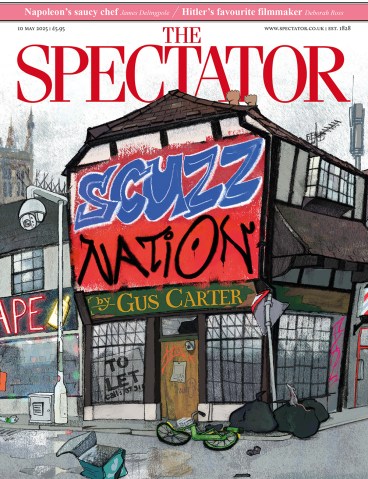
We all have our own vision of the Parthenon. Lord Elgin, for one, seems to have treated it like Harrods. Hoping to decorate his Scottish stately home with the Marbles, he wrote long instructions to his agent: ‘The first on the list are the metopes, the bas-reliefs and the remains of the statues… Would it be permissible to speak of a Caryatid?’ The Greek gods must have thought not, because Elgin’s fortunes rapidly took a turn for the worse. He lost some of the Marbles in a shipwreck in 1802; was imprisoned in a French fortress by Napoleon; his wife had an affair with his best friend; and he lost his entire fortune in the ensuing divorce. He returned to England penniless, dreams of interior design long abandoned. And that, believe it or not, is when the drama really began.
Frieze Frame, A.E. Stallings’s highly entertaining book on the reception of the Elgin Marbles, tells the tale of the eccentric cast of characters around them. Stallings, a poet, translator, classicist and Oxford’s current professor of poetry, would like the Marbles to return to Athens; but the book is less a polemic than a vivid history of ‘the strange stories and people surrounding the stones’. Stallings suggests that the debate has deep roots in these stories and people – particularly in the Romantic poets Lord Byron and John Keats, who framed the cultural debate in their works. When Elgin tried to sell the Marbles to the government, the parliamentary debates which followed were as artistic as they were political, ‘like Platonic dialogues on the nature of art, value and authenticity’.
While Parliament philosophised, Elgin stored the Marbles in a damp shed in Park Lane and brainstormed ways to get out of debt. He persuaded London’s boxing champions to pose naked and fight matches in front of the friezes, so paying audiences could compare their physiques to those of the Greeks. Regency Britain thought of itself as a new Athens, fighting for liberty against despots like Napoleon, and Elgin’s boxing matches suggested that athletic British men were ‘the natural modern expression of idealised Greek masculine beauty’. Young men and women would come along to ogle the friezes and flirt. ‘Brawny brutes in stupid wonder stare,’ Lord Byron complained, while lustful maids cry ‘These Greeks indeed were proper men!’
Byron, Britain’s philhellene-in-chief, thundered against Elgin’s crimes. In Childe Harold’s Pilgrimage, he lamented ‘the last poor plunder from a bleeding land’, more concerned with the bruised dignity of his beloved Greece than with the Marbles themselves, which he dismissed as ‘Phidian freaks/Misshapen monuments and maim’d antiques’. His real issue, however, was that Elgin was a Scottish lord, like Byron himself. Greece wasn’t big enough for both of them. This was a personal fight: his favourite target was Elgin’s nose, which, due to a nasty case of syphilis, was crumbling like his Marbles. But since ‘poets are the unacknowledged legislators of the world’, as Shelley put it, Byron’s words resonated deeply.
Young men and women would come along to ogle the friezes and flirt
The young Keats, meanwhile, saw the Marbles when they first moved to the British Museum. He was accompanied by his painter friend Benjamin Haydon, who was transfixed by the anatomical precision of the sculptures and believed they would inspire a universal school of art: ‘The true beau idéal, of which nature alone is the basis.’ Keats fell into a characteristic swoon and dashed off two sonnets that evening. Expressing a ‘dizzy pain’ at the mingling of ‘Grecian grandeur with the rude/Wasting of old time’, he memorably calls the Marbles ‘a shadow of a magnitude’.
But then the Parthenon has always been a symbol in flux. Built as a temple to Athena, it later became a Byzantine and then a Latin church; then a mosque under the Ottoman empire; then, notoriously, a powder magazine, which finally became a ruin after the Venetians attacked it. Ironically, the one thing it wasn’t was a hub of Athenian power. Soon after its completion, the Peloponnesian War began, and with it came the end of Athenian democracy. For Greece, it is nevertheless a symbol both of glory and ruin, used more recently to symbolise its economic woes. For Britain, it is both the high point of western civilisation and a physical justification for the British Museum.
The anecdotal style of Frieze Frame works wonderfully for a story driven by a few characters and their mad antics. It shows us that the debate around the Marbles has always been a strange projection of our own desires – from poets finding their own principles modelled in the friezes, to modern politicians using the controversy to score points. But no one tops Lord Elgin, whose desires were straight-forwardly decorative. Like a figure in Greek myth, he plundered the temple of Athena and sorely paid the price.







Comments